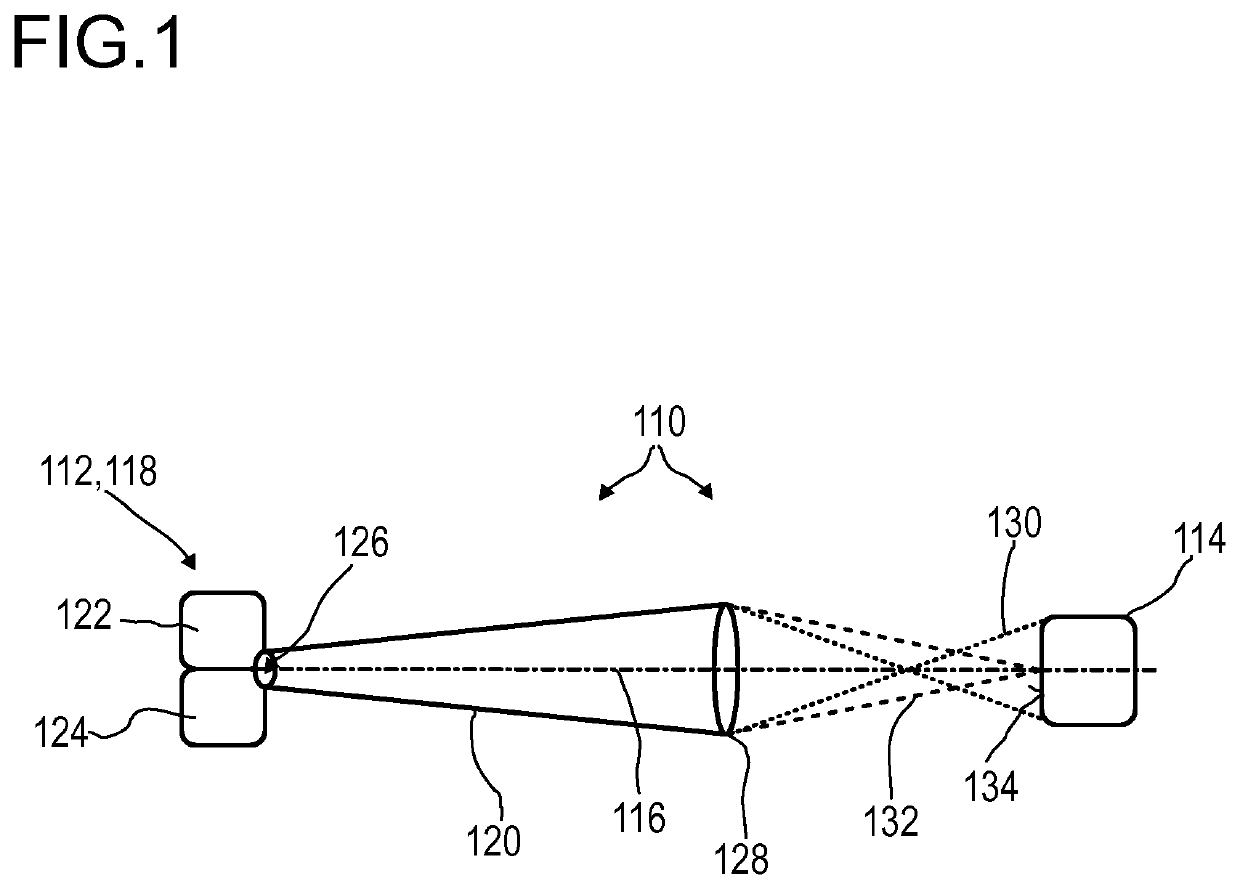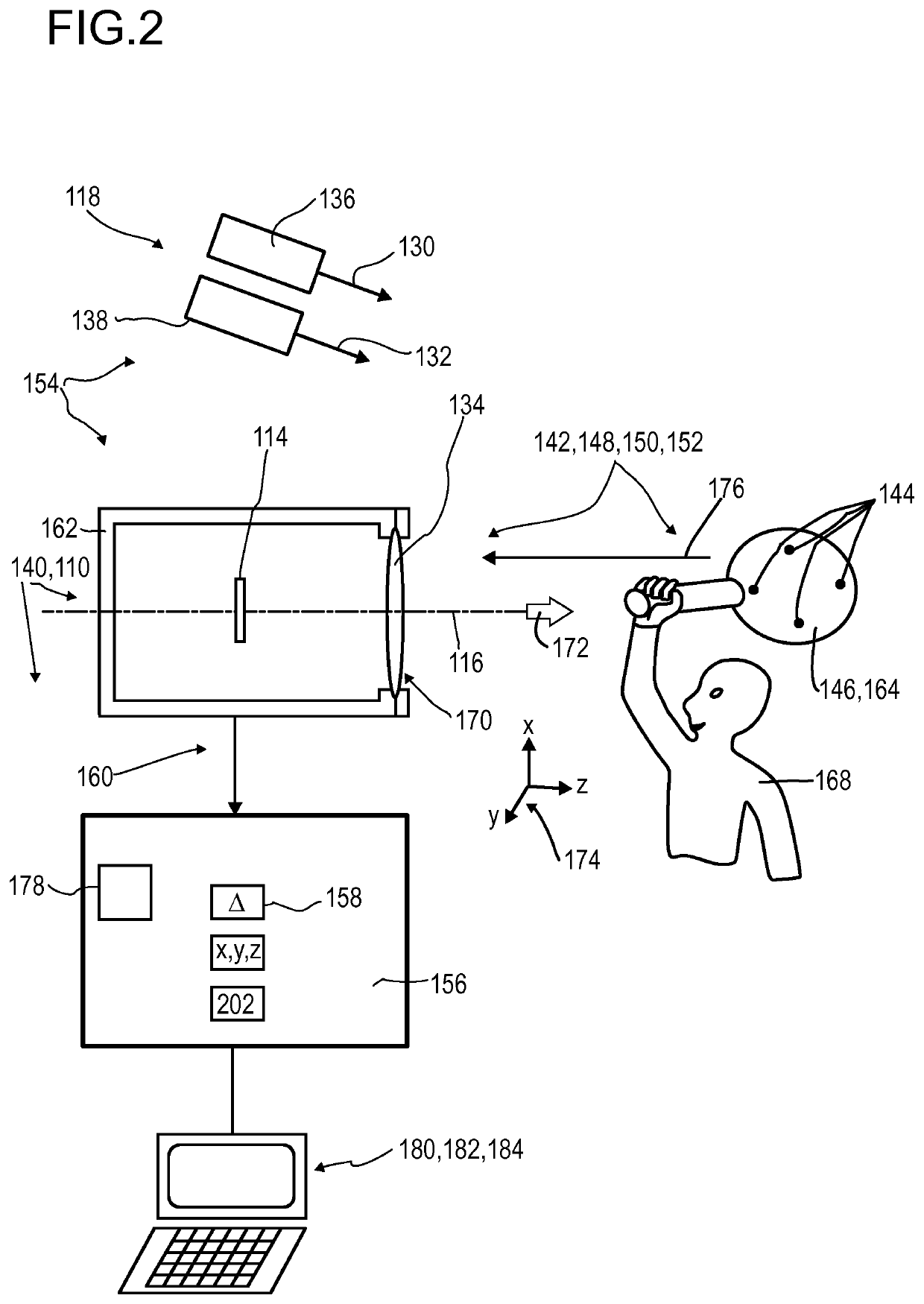Detector for optically detecting at least one object
- Summary
- Abstract
- Description
- Claims
- Application Information
AI Technical Summary
Benefits of technology
Problems solved by technology
Method used
Image
Examples
Embodiment Construction
[0225]FIG. 1 illustrates, in a highly schematic fashion, an exemplary embodiment of an optical detector 110 according to the present invention, for determining a position of at least one object 112. However, other embodiments are feasible. The optical detector 110 comprises at least one longitudinal optical sensor 114, which, in this particular embodiment, is arranged along an optical axis 116 of the detector 110. Specifically, the optical axis 116 may be an axis of symmetry and / or rotation of the setup of the optical sensor 114. The detector 110 may comprise at least one illumination source 118 adapted to emit at least one light beam 120. The light beam 120 may comprise at least two different wavelengths, wherein the light beam may comprise at least one first portion and at least one second portion having different wavelengths.
[0226]The illumination source 118 may be connected to the object 112 or even be part of the object 112, such that, by way of example, the electromagnetic rad...
PUM
 Login to View More
Login to View More Abstract
Description
Claims
Application Information
 Login to View More
Login to View More - R&D
- Intellectual Property
- Life Sciences
- Materials
- Tech Scout
- Unparalleled Data Quality
- Higher Quality Content
- 60% Fewer Hallucinations
Browse by: Latest US Patents, China's latest patents, Technical Efficacy Thesaurus, Application Domain, Technology Topic, Popular Technical Reports.
© 2025 PatSnap. All rights reserved.Legal|Privacy policy|Modern Slavery Act Transparency Statement|Sitemap|About US| Contact US: help@patsnap.com


